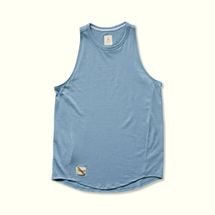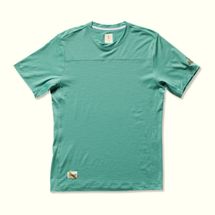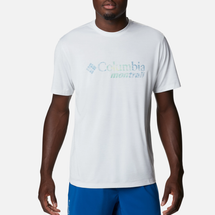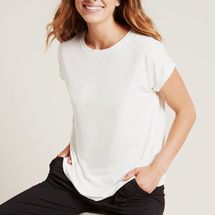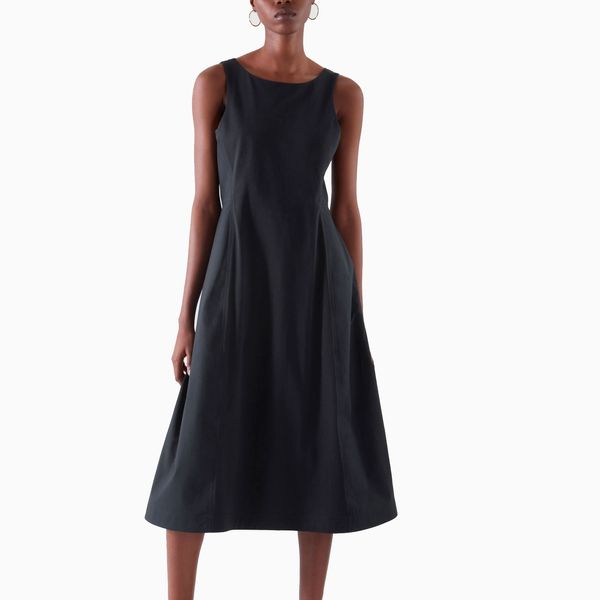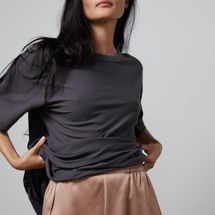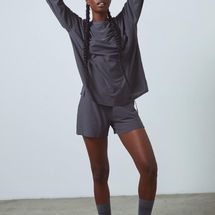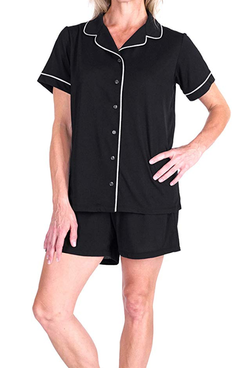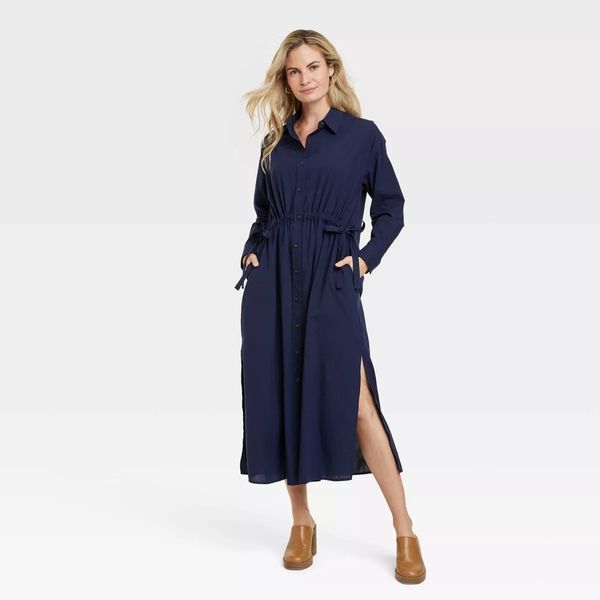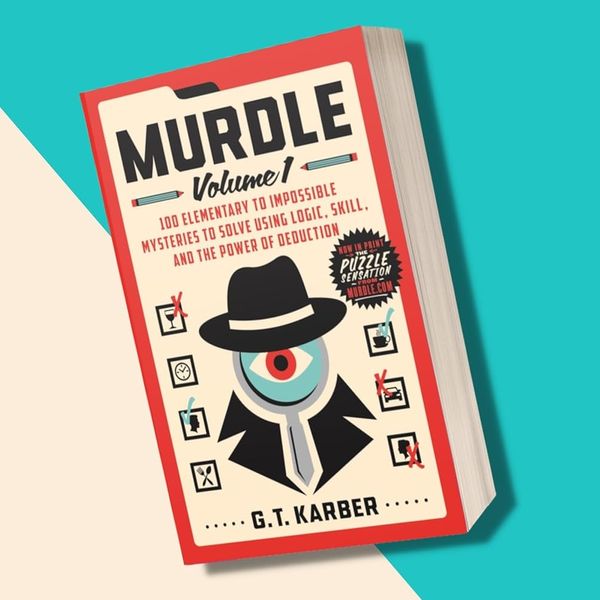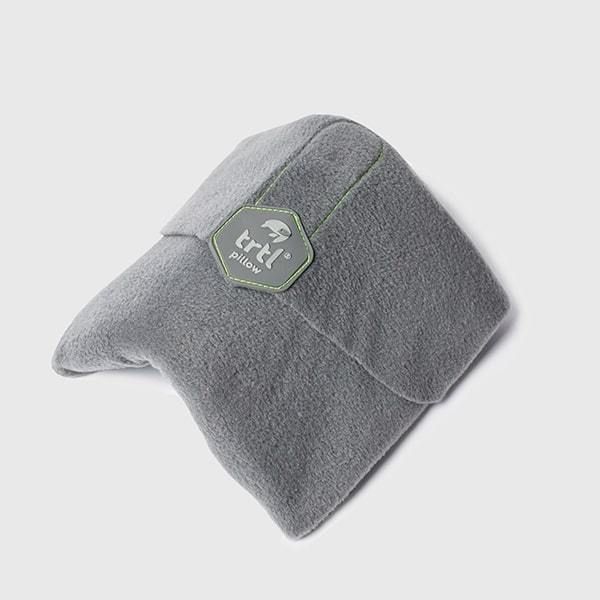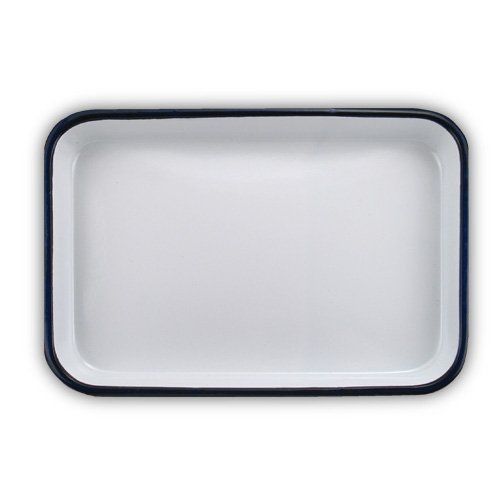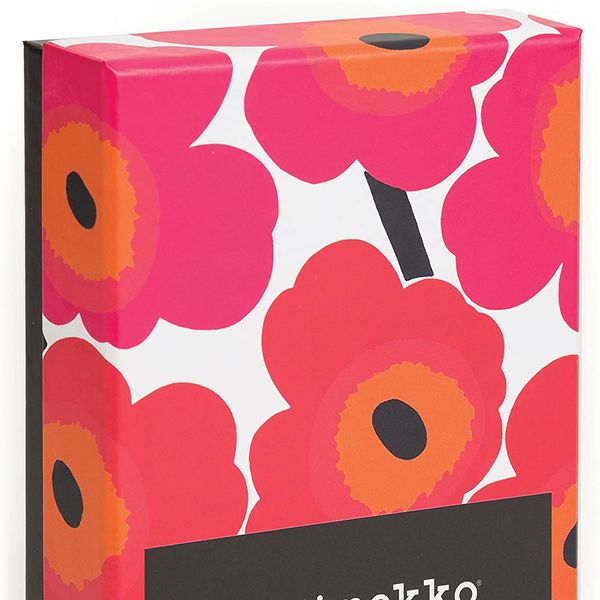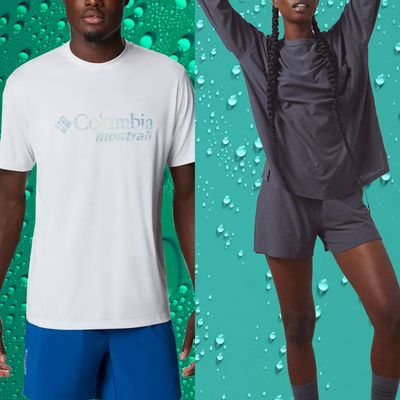
There are lots of ways to deal with sweat: You can use antiperspirant to stop it at the source, deodorant to minimize its odor, or an array of powders and balms to absorb the moisture and protect your skin from uncomfortable wetness. But even with all of those measures in place, there are still times when you’re going to sweat — like when you’re working out, sleeping, hiking, or trying to do much of anything when you’re stressed. That’s where sweat-wicking clothing comes into play.
If you’ve shopped for sweat-wicking activewear in the context of outdoor activities before, you might’ve heard the phrase “cotton kills.” This refers to cotton’s tendency to absorb moisture instead of wicking it away, making it harder for your body to regulate its temperature, leaving you hot and wet (or cold and wet if you’re exercising outside in the winter). The often-suggested alternative is a synthetic fabric that uses capillary action to draw sweat off your body, through the garment, and out into the air where it can evaporate. While this is technically accurate, the full story is a little more complicated.
Preeti Arya, an assistant professor of textile development and marketing at the Fashion Institute of Technology, tells us synthetic fibers, which are petroleum-based plastic fibers like polyester, nylon, and acrylic, have a chemical composition that doesn’t bond with water, so they don’t absorb moisture like cotton or other natural fibers. This does mean they’re great for moisture-wicking, but they also have some downsides: Since they’re derived from plastic, these materials don’t biodegrade, so they remain in the environment, often to ill effect (we’ve written more about the effects of microplastic fibers here). Also, Arya says, the moisture-wicking qualities of synthetics can degrade each time you wash them.
The reason most brands make their activewear out of synthetics is that these materials are much cheaper than natural fibers. But that doesn’t mean you can’t find a natural alternative, Arya says. “All natural fibers can be performance fibers.” Things like cotton and wool can either be blended in such a way that makes them more moisture-wicking, or woven so they’re just as lightweight as most polyester workout gear.
If you are looking for something a bit more environmentally friendly, she suggests blended fabrics, like ones that combine cotton and acrylic, for example, that still give you the moisture-wicking benefits of a synthetic but with a reduced impact on the planet. On days you’re not working out or sweating heavily, a lightweight, loosely woven cotton or linen garment might be enough to keep you dry. Angela Ballard, a registered nurse and advocate with the International Hyperhidrosis Society, says “hemp absorbs and releases perspiration quickly, and breathes well, and bamboo is breathable and repels odors.” Like Arya, she recommends linen for a breezy feel that might keep you cooler than traditional cotton. Wool, though, offers the best of both worlds. Wool absorbs some moisture, but that moisture stays in an inner layer of the garment so the surface still feels dry to the touch. As Arya says, it “doesn’t make you feel wet, or clammy, or sticky,” which explains why it’s a popular alternative to synthetics in activewear.
In putting together the list below, we’ve rounded up some of the best sweat-wicking garments experts have recommended to us for working out, everyday wear, and sleep. Despite their environmental impact, there are some synthetic garments on this list because they’re budget-friendly and work exceptionally well at keeping you dry. We’ve also pointed out which pieces are made from natural fabrics or natural-synthetic blends, in case that’s your top priority.
For working out
Exercise requires the most heavy-duty moisture-wicking, especially if you’re a heavy sweater. Most options out there are synthetic, but there are also brands making the effort to offer natural options, especially wool, as well as natural-synthetic blends. When we spoke to athletes about the best clothes for exercising in the heat, the Boston-based brand Tracksmith got a couple of mentions. Tracksmith uses merino wool in lots of its performance pieces, including the Harrier tops for men and women that are made from 89 percent merino and are still lightweight and breathable enough for serious workouts on seriously sweaty days. For even more merino gear, check out Smartwool and Icebreaker, two leading brands in the wool activewear game.
When it comes to workout gear, you’re going to find plenty of synthetic options at a variety of price points. Strategist contributor and avid runner Steven John likes these Columbia T-shirts for exercising in hot and sunny weather. “This shirt is so lightweight I can almost forget it’s on, which makes it perfect for the dog days of summer,” he says. It is 100 percent polyester, so while not a natural fabric, you know it’s going to keep you as dry as possible when it’s hot out.
For everyday
For everyday clothes that wick away sweat, you can cast a broader net and look at even more natural-fiber options like airy cotton weaves, linen, hemp, and bamboo. Mary Futher, the founder of Kaia Naturals who goes by Madame Sweat on TikTok, tells us that for dailywear, “bamboo breathes and wears beautifully” and won’t hold on to sweat or odor. She’s a fan of Boody Wear’s basics for women and men, which can be worn on their own or as layering pieces.
For clothing that can be worn either casually or even for work, Futher recommends COS for its “loose-fitting styles with clean lines and natural fibers.” This 100 percent cotton jersey dress is one example of the brand’s natural, sweat-friendly styles.
For sleep
If you sleep hot, you know how uncomfortable it is to wake up with damp and sweaty pajamas. For an example of how natural fibers can be made sweat-wicking, check out sleepwear line Lunya’s “cool” line that’s made from a blend of pima cotton and a patented fabric called transdry cotton that’s designed to absorb less moisture than traditional cotton. They do contain a hint of polyester, but it’s another proprietary material, known as XT2, that gives the clothes their antimicrobial finish, thanks to a hint of silver. That means the pieces stay fresh longer, so you’ll wash them less, meaning they’ll last longer and you’re being gentler on the environment. When I tested these out among other cooling pajamas, I was impressed by how soft they felt while still keeping me cool and dry.
These pajamas are made from polyester microfiber, but they’re also great at cooling and a lot more affordable — the whole set costs around the same price as one piece from Lunya.
The Strategist is designed to surface the most useful, expert recommendations for things to buy across the vast e-commerce landscape. Some of our latest conquests include the best acne treatments, rolling luggage, pillows for side sleepers, natural anxiety remedies, and bath towels. We update links when possible, but note that deals can expire and all prices are subject to change.
